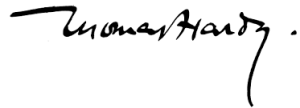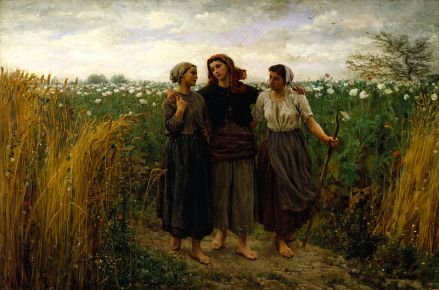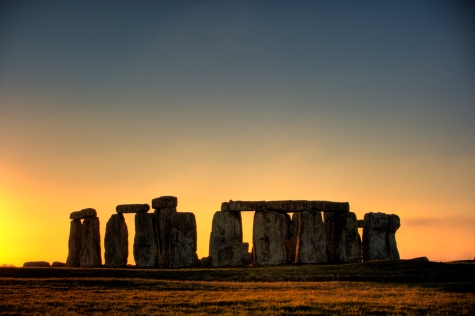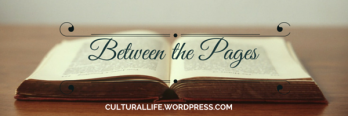Between the Pages is a new, weekly blog series which explores the life, times and creative works of well-known authors. I plan to run the blog series until the end of 2015, focusing on one author per month. New posts every Tuesday, plus occasional bonus posts.
The first post in the series is a brief biography of the author, the second looks at the historical period of the author, and the third post discusses their creative works. Finally, the last post includes selected quotations and short excerpts by the author.

So, I know I said that these posts will be published every Tuesday… And it hasn’t escaped my notice that today is Wednesday. I am a punctual person when deadlines are important, but when deadlines are self-imposed and there’s no great urgency, I think it’s okay to cut ourselves some slack. 🙂
When you think of Thomas Hardy’s writing and storylines, it wouldn’t be surprising if you think of gloom: death, depression, dark and rainy English countryside filled with mud (it’s not all pretty and picturesque, you know). When I researched material for this post, I was amused to find this Guardian infographic: Which Thomas Hardy novel is the bleakest? The graphic lists a key of all the bleak events that occur in each of Hardy’s novels — Jude the Obscure scores the most (no surprises there!), closely followed by Tess of the d’Urbervilles and The Mayor of Casterbridge.
But if we put gloom to one side for a moment, one of the key characteristics of Hardy’s writing is his affinity for writing about nature and the lives of people who are in tune with their surroundings, such as the shepherd Gabriel Oak in Far from the Madding Crowd. Gabriel’s surname has a dual meaning: it references his loyal, steadfast character and his name also draws attention to his profound connection with the rural landscape.

Jules Adolphe Aimé Louis Breton – Returning from the Fields (A rural scene that would have been common in Hardy’s time).
This image is in the public domain, thanks to the Walters Art Museum.
Hardy wrote about the landscapes and people he knew — the rolling downs of Dorset in the south of England, the accents and dialects of the country people and farm labourers — and he uses careful linguistic choices and imagery in order for the semantic richness of his works to be expressed.
Hardy has been criticised for “his at times pedantic, awkward, mannered style” (Bloom, 2004: 73) and it is true that he frequently utilises Latinate words and lengthy expressions; for example, “Their condition of domiciliary comradeship put her, as the woman, to such disadvantage by its enforced intercourse, that he felt it unfair to her to exercise any pressure of blandishment which he might have honestly employed had she been better able to avoid him” (Tess of the d’Urbervilles, ch. 29). However, his choice of lexis and use of dramatic imagery creates vivid scenes and character descriptions for the reader.
In Tess of the d’Urbervilles, Hardy uses imagery of the natural world to portray the varying emotional states of Tess. For instance, at the beginning of the novel when Tess is a maiden, “the sun blazes down upon the fields”, but by the end of “Phase the First”, the cloudy fogs of autumn with their “webs of vapour” enshroud Tess with emotional distress.
At the close of the novel, there is an intensely symbolic element in the poetic resonance of the setting of Stonehenge. “The heathen temple” (ch. 58) with its “towering monoliths and trilithons” (ibid.) not only creates a sense of the finale of an epic classical tragedy, but it also contrasts with the Victorian context: the Pagan history of Stonehenge as an opposing faith to Christian Victorian England.

Photo credit: Simon Wakefield. Source: Wikimedia Commons.
The strong imagery of the scene and compelling descriptions implicate the reader in the overwhelmingly dramatic and sacrificial tone of the conclusion of the novel. The image of Tess sleeping on the sacrificial stone as she is surrounded by the policemen who will lead her to her death does not fail to raise a shudder of dread within the reader at what is to come for our heroine.
Hardy’s talent for using language is evident in his poetry too, sometimes even more so than his novels. Later in the week, we’ll explore a few of his poems and I’ll share my favourite quotes with you.
Reference
Bloom, H., (2004). Bloom’s Modern Critical Views: Thomas Hardy. New York: Infobase Publishing.
What do you like about Hardy’s novels — the characters, the storylines, the imagery? Are you a reader who doesn’t mind some doom and gloom, or do you prefer your reading material to be “light and bright and sparkling” (a quote from Jane Austen, describing Pride and Prejudice)? Share your thoughts in the comments!


As a young person, Hardy was my favorite novelist. I found his prose intoxicating. I don’t think I noticed how pessimistic his tales were. ha! I didn’t focus on that aspect of the writing. Now, I’m startled by my youthful attraction to so much bleakness. However, he describes lives that must have existed. Whether it is sad seems beside the point. Tess is one of my favorite novels. I liked the film by Polanski very much too.
LikeLiked by 1 person
I remember watching the Polanski film when I was about 13 or so — I borrowed it on VHS from the library and I had no idea what Tess was about, but the cover of the film appealed to me as I loved (and still do love) costume dramas. I was enthralled by the story. Then, I went on to study Tess and Hardy’s poems for one of my English Lit. exams a few years later.
“Whether it is sad seems beside the point” — I agree with you. Hardy doesn’t add gratuitous tragedy or melodrama.
Thanks for stopping by. 🙂
LikeLike
Hi Grace!
It has been many years since I read any of Hardy but your post recalls mist, greyness, gloom, and somber reality. I cannot remember which of his works I read but I recall an emotional reaction to them.
A wonderful post!
Jim
LikeLiked by 1 person
Thank you! Most of his novels are quite gloomy, but as another commenter mentioned, he writes truthfully about the lives of people in a rural Victorian context. His poems are worth reading too.
LikeLiked by 1 person
I enjoy Hardy very much, particularly his imagery. I loved “Tess,” so gloom and doom aren’t an issue for me.
LikeLiked by 1 person
I agree — his use of symbolism is excellent, which also makes his novels perfect for a study syllabus. 🙂 I have a collection of analytical essays that I wrote about his poems, Tess and Far from the Madding Crowd when I was studying for my English Literature exam in my teens.
LikeLike
A fun post!
By the way, you’ve been chosen as one of today’s nine blogs in That’s So Jacob’s Ninth Month Blog Challenge (http://www.thatssojacob.wordpress.com)! I challenge you to find nine blogs you find interesting and give them a comment to brighten their day…well, eight other blogs and mine 🙂 Copy this message in your comment and enjoy your new blog friends!
LikeLiked by 1 person
Thank you! 🙂
LikeLike
Hello Grace from North Carolina, USA. I was very busy in Sept. getting ready to travel & then traveling, but saved your Hardy posts to read now, as I’ve loved Thomas Hardy’s novels & poems, since first reading Return of the Native in high school. I think what I loved most- after the dramatic story-telling- was the beautiful nature writing & the folkloric aura over all his settings & characters. In Virginia Woolf’s diaries she recounts a visit she & Leonard made to the Great Man of Letters late in his life. She was quite impressed with him –& I may be disremembering this just now (and haven’t checked it out–) by the fact that he was up to date on current literature & modern enough to offer them glasses of whiskey with or instead of tea. Thank you so much for featuring Thomas Hardy first in your wonderful new blog pages. I look forward to the rest of the year & hope into 2016. Judith
LikeLiked by 1 person
Thank you for your lovely comment, Judith. 🙂 I’m so glad you enjoyed my Thomas Hardy posts, and I was very interested to hear about Virginia Woolf’s meeting with Hardy. Thanks for sharing that. I haven’t read Return of the Native, but I really should!
In fact, I started my Between the Pages series by exploring Jane Austen’s writing. Here’s a link. She’s my all-time favourite author, but Hardy is a close second. Are you an Austen fan?
I enjoyed writing and researching Between the Pages in August and September, but my life has gotten busier since then and I’ve decided to take a break from writing the series. I explained why in a recent post: A Between the Pages Announcement. But I’m still planning lots of literature-related posts and I’ll probably resume the series at some point in the future. I hope you’ll stop by again. 🙂
LikeLike